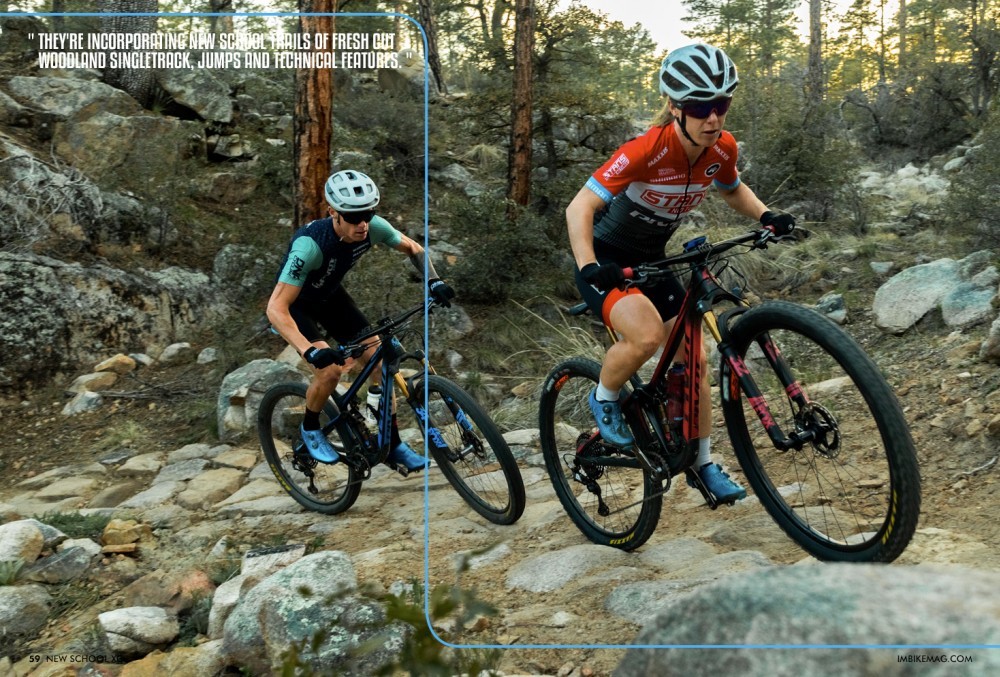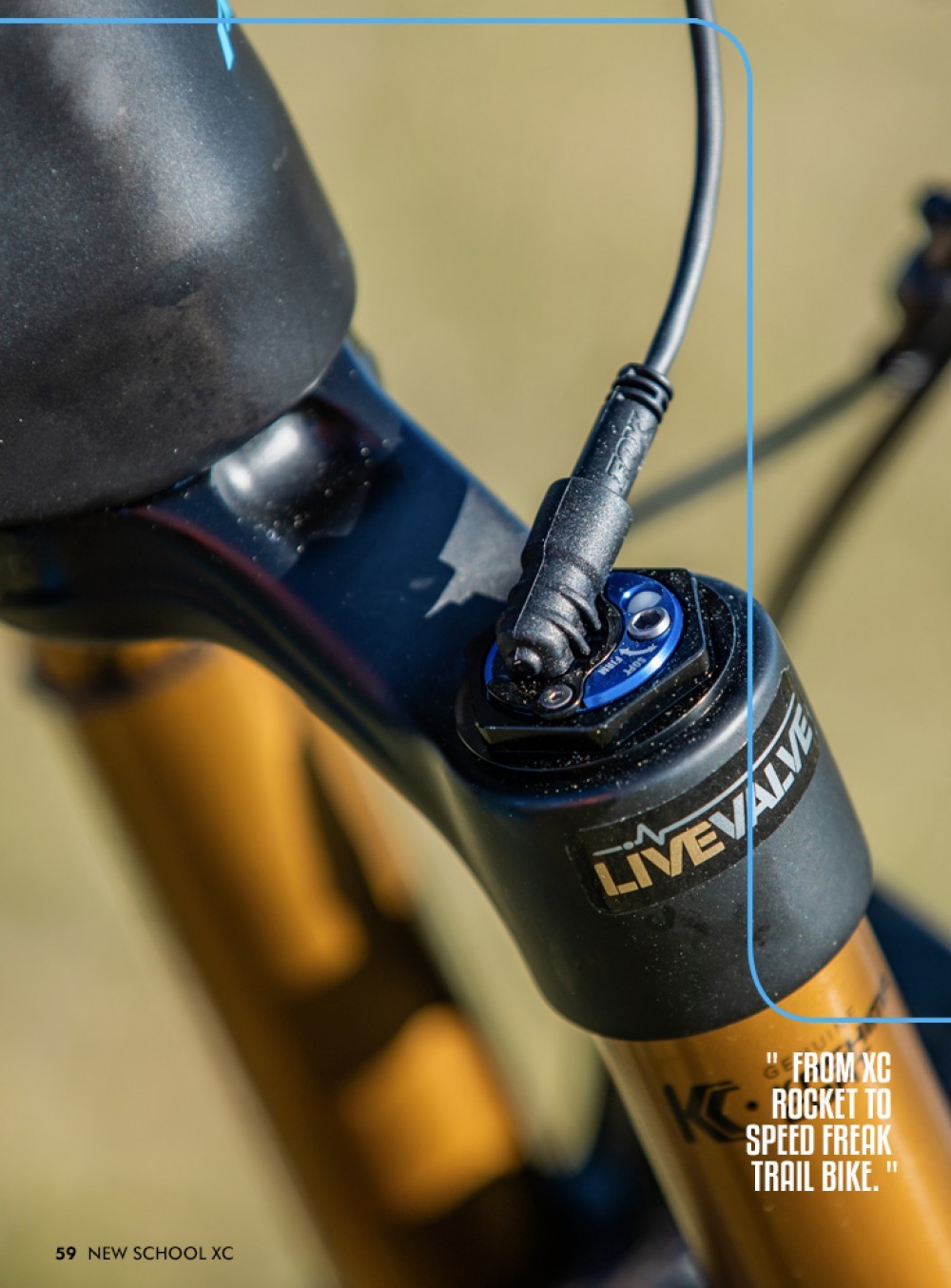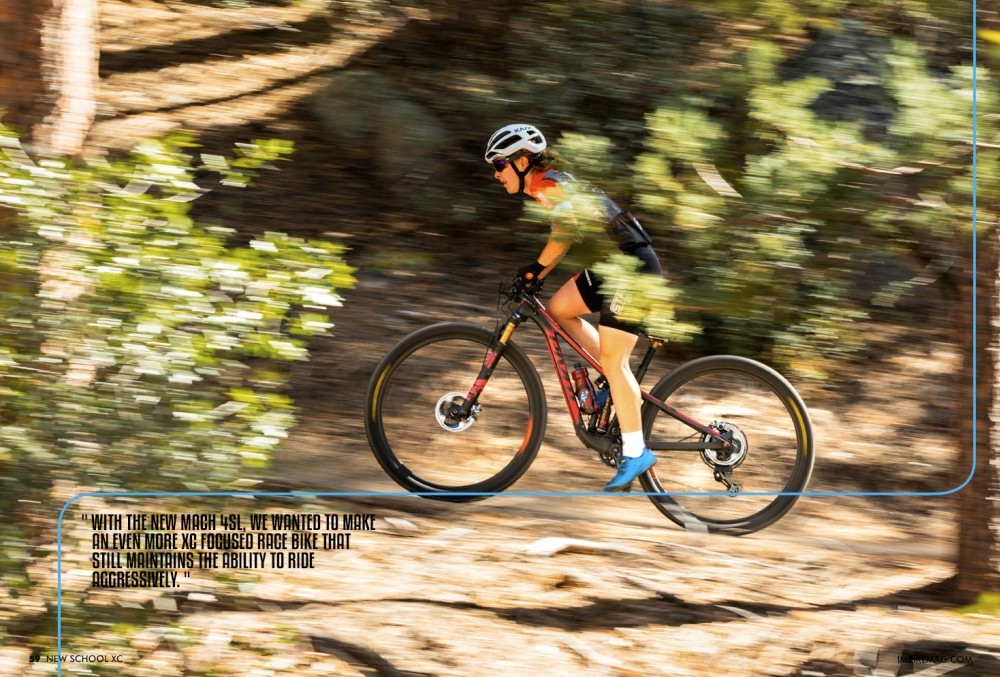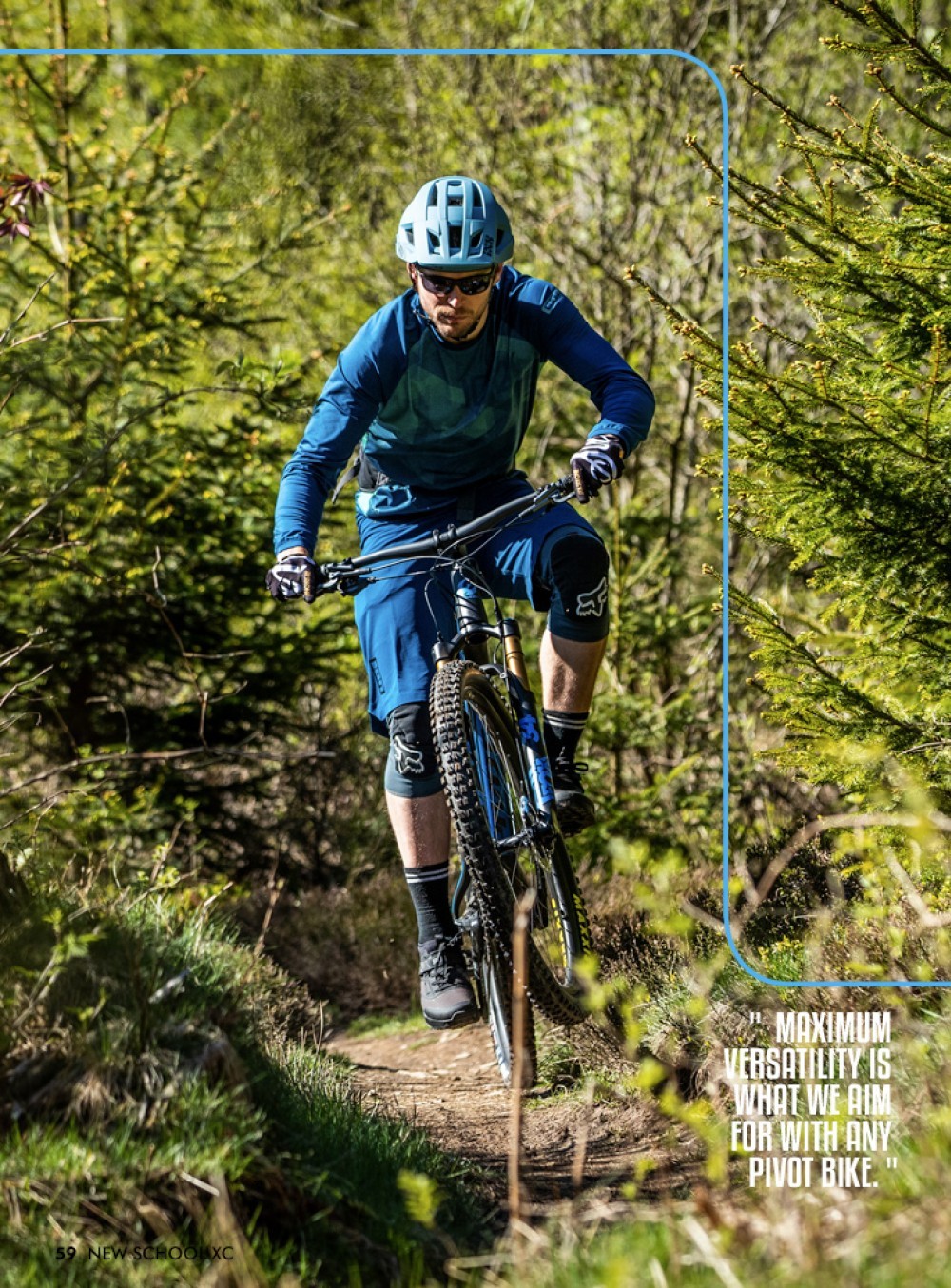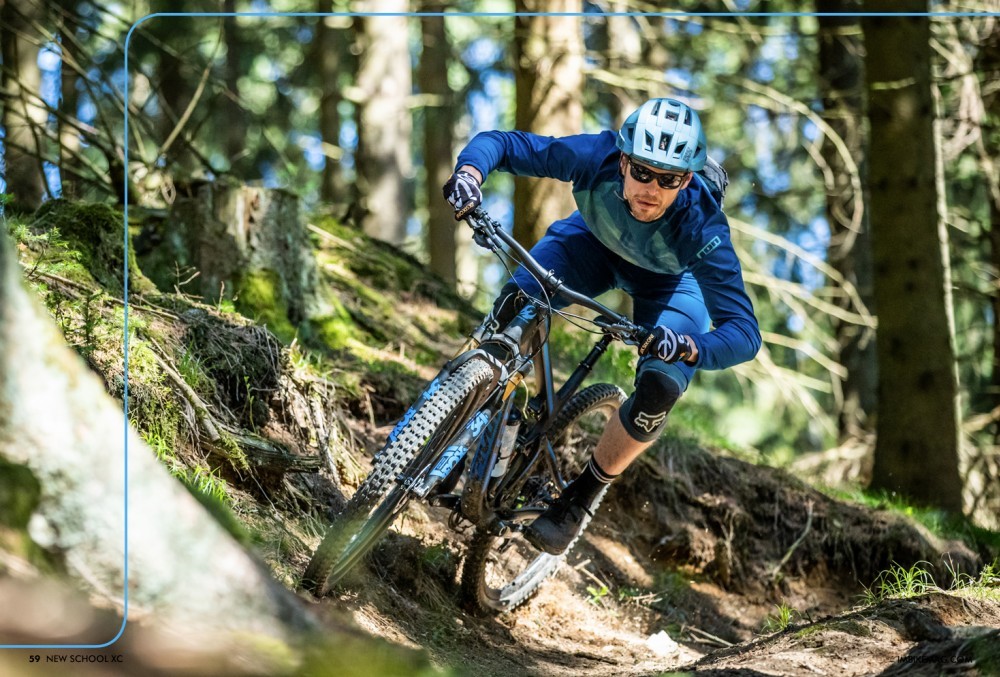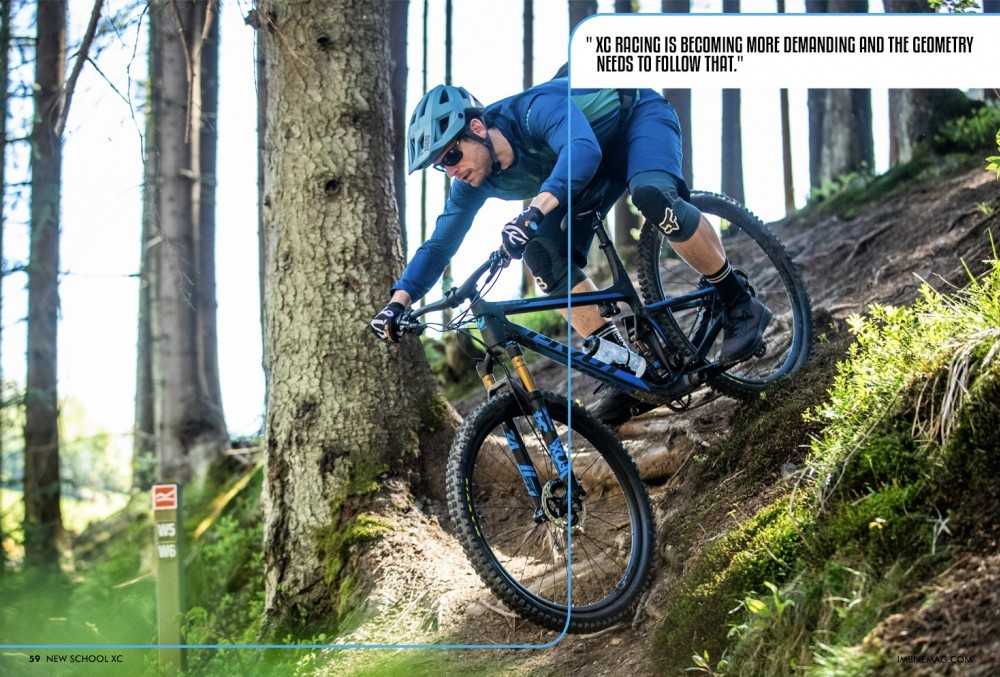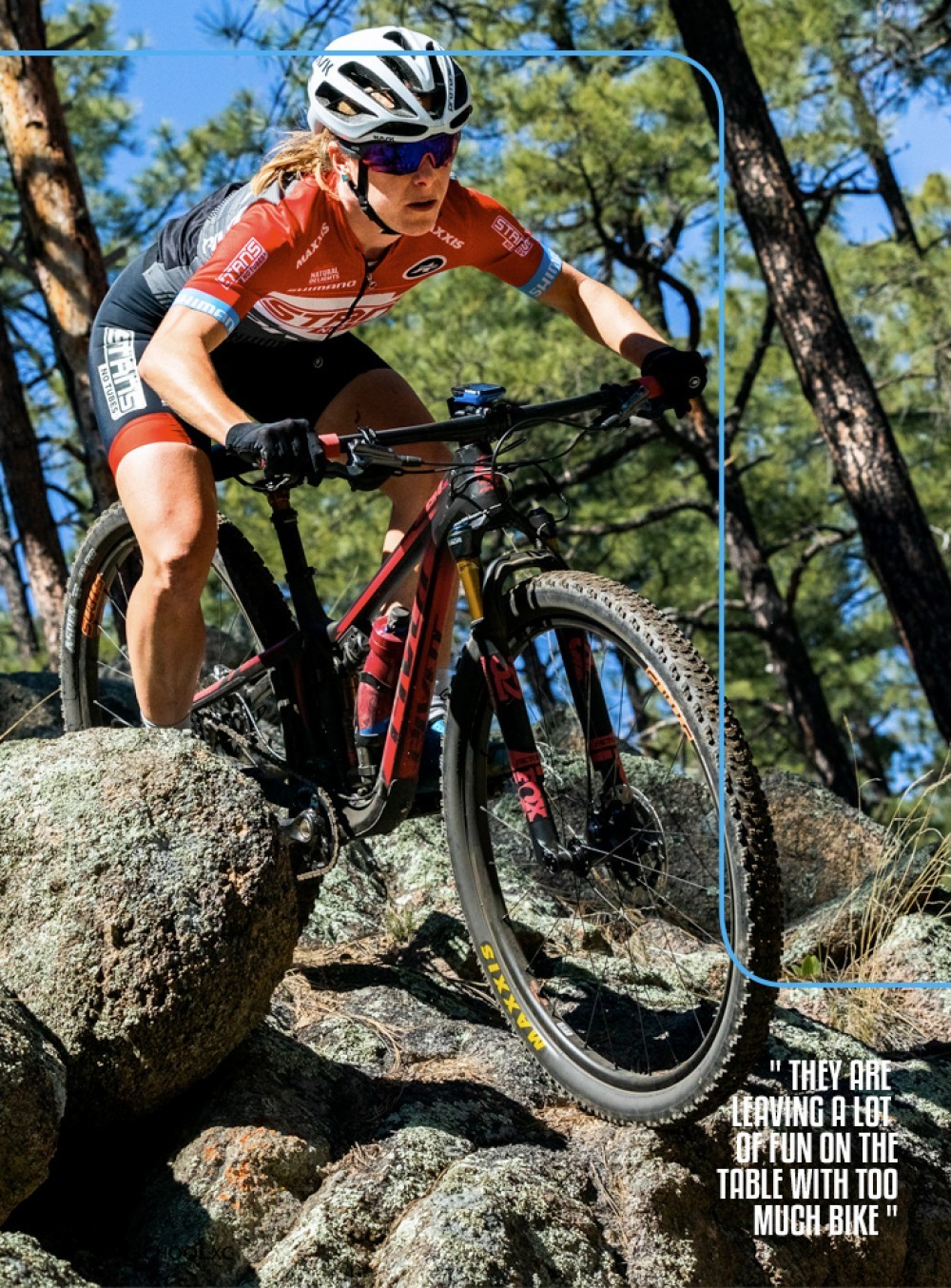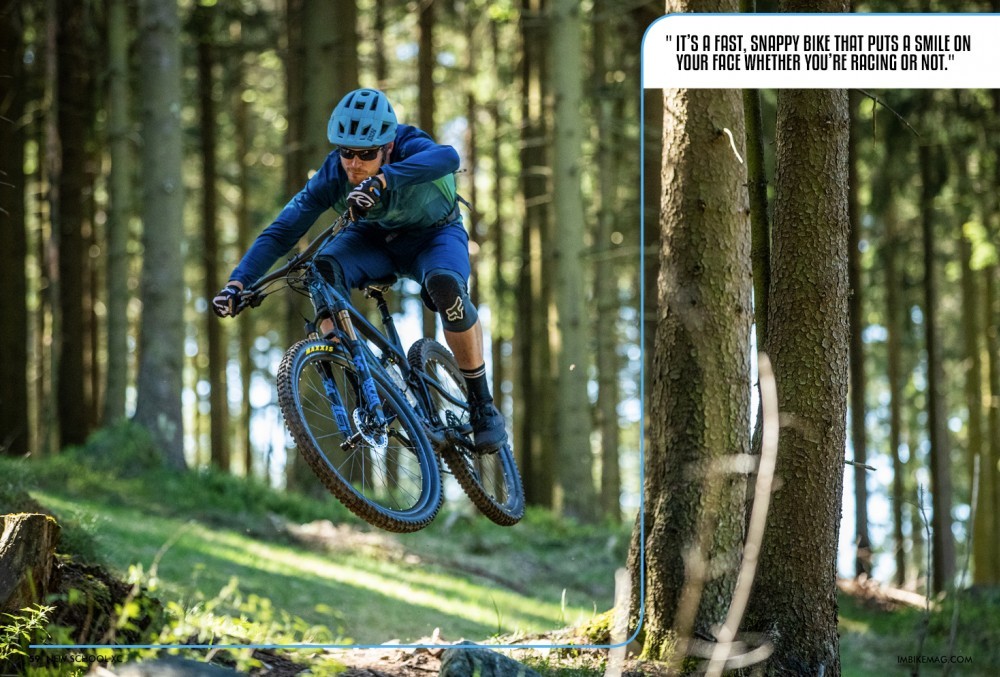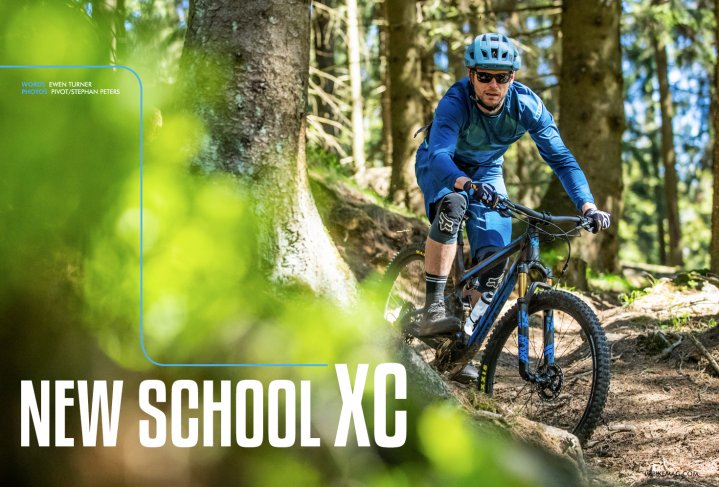
New School XC
Issue 59 / Thu 27th Jun, 2019
Time's are a-changin' once again: this time it's cross-country bikes that are getting the long, low and slack treatment and Ewen Turner is all for it! Ditch the Lycra, but keep the speed with modern XC bikes.
I'm not looking as out of place as I had expected. I have a peak on my helmet and slightly baggy shorts which certainly sets me apart from most, but my bike doesn't look drastically different from the masses. I have a dropper post, tyres with some semblance of grip and handlebars of proper width. I'm lined up at a local cross-country race and things are certainly changing in the world of Lycra-clad racing.
My heart is soon through the roof, yet I've just hucked off a kicker and railed some berms in the woods whilst being chased by what feels like a swell of unrelenting Lycra zombies. I haven't done a mass start race since the Megavalanche and although comparisons between the two are unwise, the head-to-head nature of racing is always exhilarating.
Cross-country racing is on the rise, not necessarily in popularity as it has always been a huge section of mountain biking, but rising in prominence and stature amongst the rest of the bike world. Courses at World Cup level are getting more and more challenging, driving developments in both bike design and rider skills. Viewing figures are on the up too, as more fans tune in to watch the races.
Even at the local level, those designing the courses for my race aren't content with fire roads and hard pack trails. They're incorporating new school trails of fresh cut woodland singletrack, jumps and technical features. The demands on the bike and the rider are increasing, and as this happens, interest in cross-country racing has been renewed.
Gone are the days of short, steep bikes with 120mm stems, bar ends and bars so narrow your elbows touch. The longer, lower, slacker mantra has pervaded all aspects of mountain bikes and has now come to pass in the cross-country world. A few years back if you'd asked me to ride a 100mm XC bike I would have made my excuses and snuck away. Now, looking at what's out there, I'm genuinely excited about what these bikes can offer. Yeti, Cube, Intense and Pivot, to name but a few, are bringing out bikes that can cut it on the World Cup circuit, yet offer a new experience to those willing to take them outside the tape.
So what is a new school cross-country bike all about? Coming up with a new name for this genre is fun (XXX-C?!?) but they are essentially super fast trail bikes. Take a 100mm XC bike and load it up with a 120mm fork slackens it off a bit to make the front more amenable to obstacles. Next, slide some 'proper' tyres in there and the transformation is nearly complete: from XC rocket to speed freak trail bike. Obviously, a dropper, a shorter stem and decent width bar complete the look as you ditch the Lycra and hit the trail. Things change subtly, but you are left with an exceptionally quick bike that can still punch above its weight on the trail.
The margin of error reduces and you end up on the razor's edge more often, breathing life into the trails you know and love, but may have become stale. Lugging around an enduro bike might be on-trend, but if your trails are mellow it offers no advantage. Modern geometry is the key to unlocking the potential of a short travel bike and this new wave of bikes is incorporating that into their design to great effect.
If there is one bike that epitomises the rise of modern XC it's the new Pivot Mach4SL. I asked Chris Cocalis for the low down on this new bike...
What is it about the new Mach4SL that makes it different from your previous 100mm bikes?
It’s a new way to look at the same goals. The previous 429SL was fast and fairly light with a reputation for descending well outside its category, and the Mach 4 was a 27.5” bike with 100mm travel and geometry that bridged the gap between XC and Trail bike. The previous generation Mach 4 is a light bike and the 27.5” wheels made it very responsive, while the geometry and the additional travel made it capable of taking on very aggressive trails. With the new Mach 4SL, we wanted to make an even more XC focused race bike that still maintains the ability to ride aggressively. Most people expect a true World Cup XC race bike to be a tool with one purpose. With the new bike, we’ve really been able to exceed the key performance metrics in the category (lightweight and pedalling efficiency) and push the boundaries of what the bike is capable of.
The Mach4SL is obviously a race-winning bike, but can also put a smile on your face shredding the singletrack in the woods. Was this a clear intention when designing the bike, or just a result of XC racing becoming more demanding? I.e. is it an XC bike that knows how to have fun, or a lightning fast trail bike, or something else entirely?
Maximum versatility is what we aim for with any Pivot bike. If it’s an enduro bike we aim to hit that target, but make it pedal better then other enduro bikes. In the case of the Mach 4SL, making a true no-compromise World Cup XC race bike that is also a capable marathon/trail/down-country bike was an important goal for us. The DW-link suspension design achieves the pedalling performance without having to run super high levels of compression damping and that allows the bike to be more open and capable in the bumps. The geometry trends also help achieve this. When we launched the original Mach 429 Carbon, we were criticized for the bike being too long and too slack for an XC bike but we’ve obviously surpassed that with the new bike. XC racing is becoming more demanding and the geometry needs to follow that. I think XC riders are also understanding that you can still cut a tight turn in a short track style race or traditional style XC course on a longer, slacker bike while having a big performance advantage on other parts of the course.
Do you feel that the Mach4SL has a remit beyond the race track?
Absolutely! For a lot of riders, this will be their bike that they ride everywhere. If you have the luxury of owning 2 bikes then a Mach 4SL and then maybe a Mach 6, Switchblade or Firebird 29 can cover anything you could want to do on a bike. Or, if your riding leans more towards the XC side of things, then the Mach 4SL can be the perfect bike, even if you aren’t racing.
The trend has been for longer and longer travel bikes, what do you feel are the benefits of a short travel machine? Are there benefits to the average rider?
I get this question often. Riders ask why they wouldn’t just go for the longest travel thing they can get. Our 429 Trail and a Firebird 29 may weigh just a couple pounds more so why not go for the most travel? That’s one way to look at it, but for many riders, they are leaving a lot of fun on the table with too much bike. If the terrain you ride doesn’t look a lot like Whistler’s mountain bike park then something with less travel may be a better choice. A shorter travel bike can carry speed better in less extreme terrain and has a snappiness to the ride that you don’t get with a long travel bike. It feels great to be able to monster truck over everything, but in many cases, a rally car will give you more smiles per mile (or kilometre). When you get on the new Mach 4SL, the ability to push on the pedals and just feel the acceleration is addictive. It feels like riding an e-bike in the boost setting, but the bike is less than half the weight. Even if climbing isn’t your thing, the Mach 4SL may just make climbing something that you look forward to. It’s a fast, snappy bike that puts a smile on your face whether you’re racing or not.
Where do you see the future of these short travel bikes heading? Will XC bikes get the long low slack treatment?
Everything is a balance. The trends may change to adapt to the courses and riding styles, but in each category there reaches a point where you start giving up too much of the key attributes that an XC bike requires to get something else. They may get slacker and longer, yet at some point, the corning speed and precision that makes an XC race bike do what it does well may start to go away. I think we’ve done a good job with the Mach 4SL striking that balance, but I’m sure there will be others that push the limits further. In this category, the lap times are going to be the ultimate decider as to what will work and what won't.
Videos
By Ewen Turner
Ewen Turner is a self-confessed bike geek from Kendal in the Lake District of England. He runs a coaching and guiding business up there and has a plethora of knowledge about bikes with an analytical approach to testing. His passion for bicycles is infectious, and he’s a ripper on the trails who prefers to fit his working life around his time on the bike.



